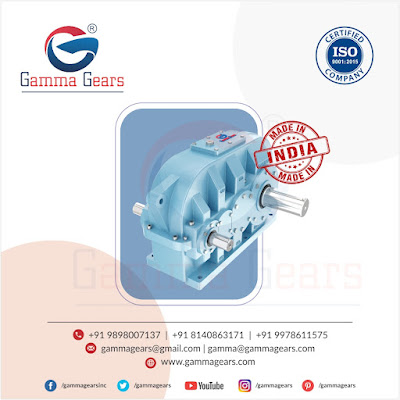Gantry cranes are crucial in the heavy lifting and material handling industries, commonly used in ports, shipyards, construction sites, and warehouses. These cranes, designed for high-capacity lifting, require robust and reliable mechanical systems to handle the immense loads they often lift and move. One of the most critical components of a gantry crane’s drive system is the gearbox, and in this context, a parallel helical gearbox is particularly well-suited for the demanding requirements of heavy-duty gantry cranes.
Design and Operation of Parallel Helical Gearboxes
A parallel helical gearbox consists of gears with teeth cut at an angle to the shaft's axis. This helical tooth profile offers several advantages over other types of gears, including greater load distribution, reduced noise, and smoother operation. In a gantry crane, where large, heavy loads need to be lifted and moved with precision and reliability, these features are particularly valuable.
Parallel Helical Gearbox for Heavy Duty Gantry Crane
The gears in a parallel helical gearbox mesh in such a way that the load is evenly distributed across multiple teeth, which significantly reduces the stress on individual teeth and minimizes the likelihood of failure. This distribution of load results in better torque transmission, making these gearboxes ideal for heavy-duty applications such as gantry cranes, where substantial lifting forces are constantly exerted on the system.
Additionally, the parallel configuration of the shafts in the gearbox allows for a more compact and efficient design, which is important for saving space while maintaining the required torque and power output for the crane’s operation. This is especially important in environments where space constraints exist but high-performance systems are still necessary.
Heavy Duty Demands of Gantry Cranes
Heavy-duty gantry cranes are engineered to lift and transport massive loads, often exceeding several hundred tons. The gearbox in these cranes must be capable of transmitting high torque from the motor to the crane’s hoist and trolley systems. The stress on the gearbox components is immense, with the gears needing to withstand not only heavy loads but also shock loads during lifting and lowering operations.
Crane Duty Parallel Shaft GCN Helical Gear Box Manufacturer
The harsh operating conditions—frequent starts and stops, high-duty cycles, and exposure to environmental elements—demand a gearbox that is durable, efficient, and reliable. A parallel helical gearbox excels in these areas due to its design characteristics, which allow it to handle high loads with minimal heat generation and wear. This ensures that the gearbox will operate efficiently over extended periods, providing a longer lifespan for the crane's mechanical system.
Benefits of Parallel Helical Gearboxes for Gantry Cranes
1. High Torque Capacity: Parallel helical gearboxes are designed to handle high torque, making them ideal for heavy-duty gantry cranes. The gear teeth are engineered to engage smoothly, which enables them to distribute torque more effectively and reduce the risk of gear wear or failure.
2. Smooth and Quiet Operation: The helical tooth design contributes to quieter operation, reducing the noise levels of the crane’s operation, which is important in noise-sensitive environments. The smooth engagement of the gears also reduces vibrations, contributing to the crane’s stability.
 |
| Crane Duty Parallel Shaft GCN Helical Gear Box Manufacturer |
|
3. Energy Efficiency: In heavy-duty gantry cranes, energy efficiency is crucial due to the high power consumption of the crane systems. Parallel helical gearboxes are known for their high efficiency in transmitting power, which reduces energy loss and operational costs. This efficiency ensures that the crane can perform its tasks with minimal energy expenditure.
4. Reliability and Durability: The robust construction of parallel helical gearboxes, often made from high-strength steel or other durable materials, ensures that they can withstand the rigorous demands of gantry crane applications. The gearbox design also helps minimize the effects of wear and tear, making it a long-lasting and dependable component in the crane’s drive system.
5. Compact Design: The parallel arrangement of shafts allows for a more compact gearbox design, saving valuable space in the crane's overall mechanical system. This space-saving design can be particularly important in tight environments or for cranes with limited room for additional components.








